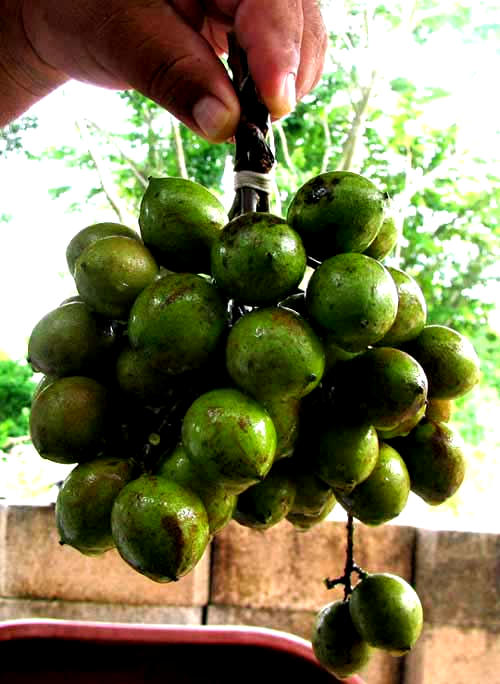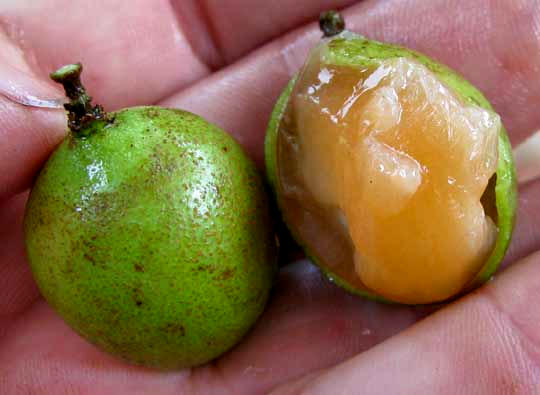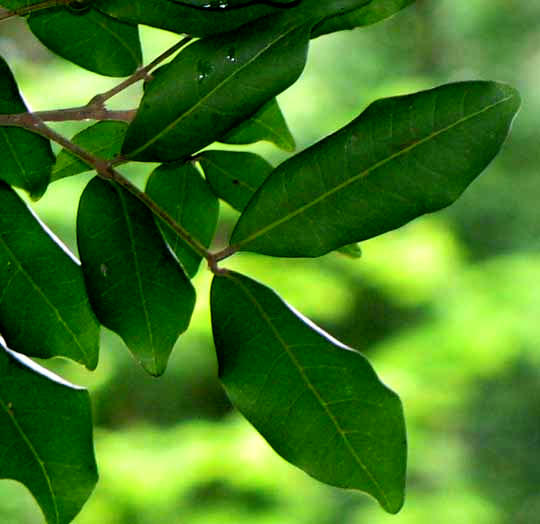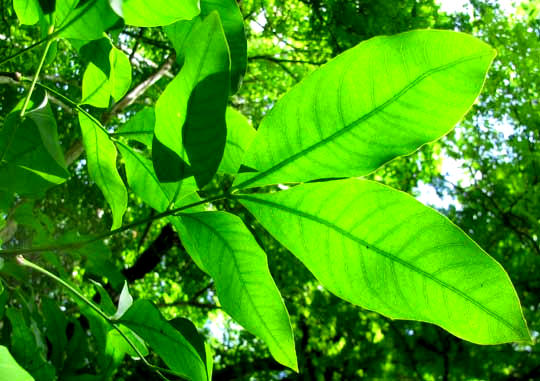Excerpts from Jim Conrad's
Naturalist Newsletter
from the July 25, 2010 Newsletter issued from Hacienda Chichen Resort beside Chichén Itzá Ruins, central Yucatán, MÉXICO; limestone bedrock, elevation ~39m (~128ft), ~N20.676°, ~W88.569°
GUAYA FRUITS FOR SALE
At the monumental speed bump in Kaua where cars must slow to a creep to avoid scraping their bottoms nowadays usually there's a Maya lady in a florally embroidered huipil standing selling green, plum-size, grape-like fruits in tied-together bunches as shown below:

You pull off a fruit, bite the green shell not too hard, and the thin husk readily cracks apart freeing a succulent, pinkish-cream-colored pulp, as shown below:

The lady is selling what's called Guaya or Mamoncillo in Spanish, Uayum in Maya, and Spanish Lime, Genip or a host of other names in English. It's MELICOCCUS BIJUGATUS, a member of the same family in which we also find Litchi fruits and the North's weedy balloon- vines, the mostly tropical Soapberry Family, or Sapindaceae. Guaya trees are fairly large and bear pinnately compound leaves usually with four leaflets.
After cracking the Guaya fruit's shell the pulp easily plops into the mouth. Then you taste that it's like slightly sour grape flesh, and you're a little disappointed that the flesh so thinly covers the large seed. The flesh must be hydrophilic because as you suck on it it seems to expand a bit. The seed, I read, can be roasted like a chestnut. Some folks chill Guaya fruits in their freezers, then serve them as cold, tangy snacks during these hot, humid days. The local Maya eat them with chili powder, salt, and lime.
There's some confusion about what tree is actually the Guaya we're talking about. The Guaya producing the fruits shown above, Melicoccus bijugatus, is native to northern South America but is widely planted and often naturalized through all of hot tropical America, and beyond. It's not a wild tree in the Yucatán's forests.
However, the Maya may well lead you to a large, wild tree in the forest -- one also with pinnately compound leaves with four leaflets -- and say that it's a Guaya, or Uayum. In fact that's the very similar, closely related tree Talisia oliviformis. If you ask the Maya directly about different kinds of Guaya or Uayum, usually they'll admit that indeed there are two, one producing the big fruits illustrated above, and the other, this forest-dwelling one, with a smaller fruit, also edible, but not eaten as frequently, and that's Talisia oliviformis.
The compound leaves of the planted Guaya are shown below:

The compound leaves of the wild Guaya are shown below:

The leaves of our wild Guayas, Talisia oliviformis, are wider, thinner and hairless, while those ofthe planted Guayas, Melicoccus bijugatus are more narrow, leathery and hairy. The planted Guayas have been cultivated for so long that several cultivars have been produced, including some with extra sweet fruits.